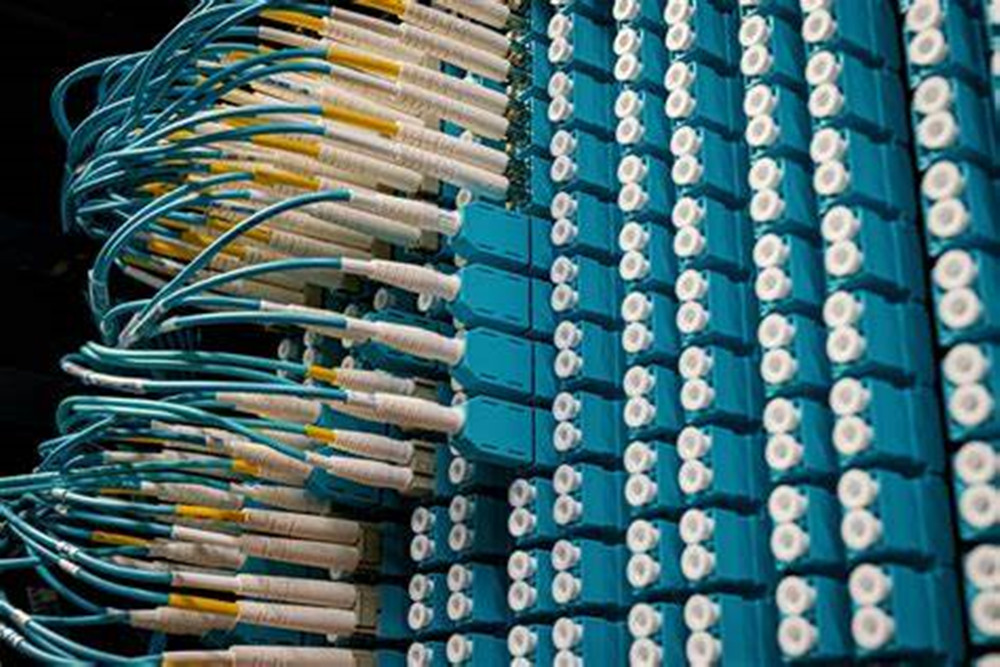The most common MTP/MPO connectors are terminated on 12 or 24 ribbon cables because ribbon cables have appeared in multi-fiber arrays. Ribbon fibers are usually composed of 12 different colors of bare fibers, which are held together by a glue or adhesive called a matrix. MTP/MPO connectors are ideal for this type of cable structure. The ribbon cable also ensures that the optical fiber lengths are equal to provide high-speed data requirements with the smallest error rate. MTP/MPO connectors can be easily terminated on this cable type. Compared with other fiber optic cable structures, ribbon cables are usually compact in size, so this is a space-saving solution.
1. Micro distribution
Micro Distribution Cables are also an option for manufacturing MTP/MPO cables because they are a small, compact cable solution that can accommodate high fiber counts. Such cables, like ribbon cables, allow operation in small ducts, panels, and other narrow spaces.
2. Polarity type
When it comes to MTP and MPO patch cord, there are three main types of polarity, polarity A, polarity B, and polarity C, as well as an 8-fiber option. If you are building a custom MTP patch cable, you may have the option of custom configuration polarity, but in fact, the most common polarity types are the 3 options listed above. Polarity refers to the configuration of the optical fibers in the connector. Each optical fiber corresponds to the transmitting and receiving optical fiber of the connecting device. If these optical fiber connections do not match, your connection will not work properly.
Polarity is one of the most important factors when deploying MTP patch lines; you must know what configuration is used in the system in order to properly match the equipment. The MTP adapter also needs to correspond to the polarity of the MTP that matches the adapter, and all polarities in the system must be the same.
3. Polar
“Polarity A” is also known as “up-key-down-key polarity” or “through polarity”, that is, the fiber is configured with fiber 1-fiber 1, fiber 2-fiber 2, fiber 3-fiber 3, fiber 4-fiber 4 Wait. Each fiber must match another fiber in the configuration.
1) Polarity B
Polarity B is a key-to-key configuration. In this polarity, optical fiber 1 matches optical fiber 12, optical fiber 2 matches optical fiber 11, and so on. This is also called reverse polarity.
2) Polarity C
Polarity type C is also critical when the bond is down, and the fiber of the fiber 1-Fiber 1 is of the same polarity, and fiber 1 will match fiber 2, will match the fiber, and fiber 3 4, will be the configuration of the fiber and the fiber 5, 6, etc. . This polarity is also called flipped pair polarity.
4. 12 fiber MTP/MPO 40gig SR4 Pinout
An 8-fiber pinout is used for 40gig applications. In this configuration, only 8 fibers are lit, 10G/lane (fiber) bidirectional multiplied by 8 fibers equals 40G bidirectional, and the remaining 4 fibers in the connector are not used. The general configuration is No. 1 fiber No. 12 fiber, No. 2 fiber No. 11 fiber, No. 3 fiber No. 10 fiber, No. 4 fiber No. 9 fiber, of which the colors of No. 5, No. 6, No. 7, and No. 8 are darker.
5. MTP/MPO adapter/mating sleeve
Additionally, a key-up key-down adapter or mating sleeve is required for A and C polarity, while a key-up key-up sleeve is required for B polarity. You should also know that you cannot mate two connectors of the same sex, so you cannot mate two male MPO connectors or two female MPO connectors. The connector is aligned in the mating sleeve through the guide pin of the male connector. You will select the correct mating sleeve according to the polarity of the system.
6. MTP/MPO gender
MTP has two different genders-male and female. The female MTP connector does not have any pins, and the male connector has two stainless steel guide pins in the connector housing. Each connector will be aligned with a specific adapter, depending on whether the connector has pins or no pins, and whether the polarity is key-up-key-up or key-up-key-down type.
Recently we have seen MTP connectors with variable gender and polarity. According to the needs of the installation, a small tool can be used to open the shell and remove the pins. These types of connectors are especially valuable in this area because you don’t need to send the connector or power cord back to the manufacturer to change the gender.
MTP connectors are becoming more and more popular because bandwidth and space are very important in data center solutions and other applications, and why we should use 12 connectors instead of the concept of one connector. The MTP/MPO cable is a simple plug-and-play solution that can be used by any optical fiber technician.



